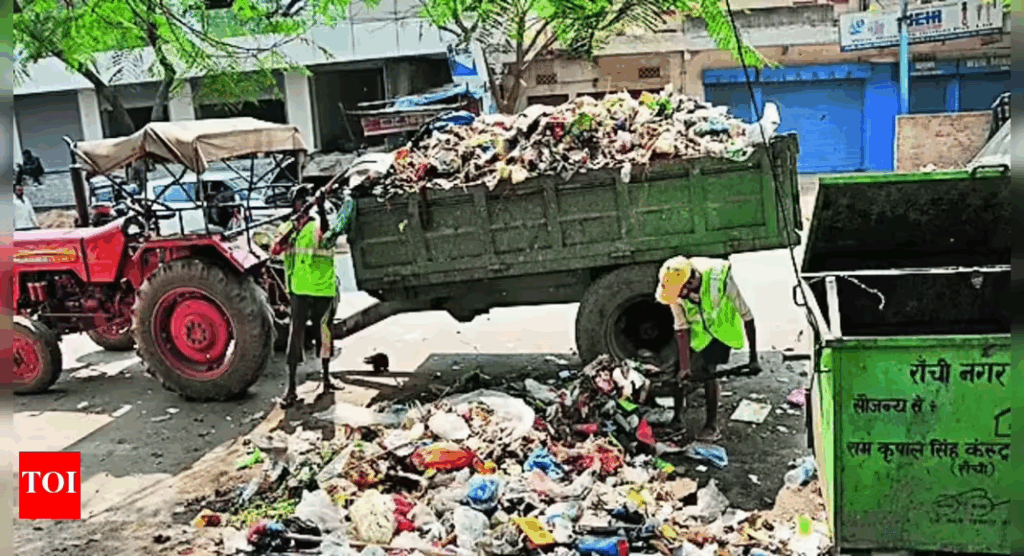Ranchi RFID Waste Collection: Tagging Nearly 200,000 Households for Smart Service
In early September 2025, Times of India reported that the Ranchi Municipal Corporation (RMC) has rolled out a large-scale RFID deployment, tagging 1,99,900 households and equipping 240 garbage collection vehicles with RFID readers, to upgrade the city’s door-to-door waste collection system.
This marks a significant project in public services using RFID to bring accountability, data, and real-time tracking to municipal sanitation operations. Below is what is known so far about its implementation, technology, challenges, and possible impacts.

Project Overview & Goals
- The households are divided into four municipal zones:
• Zone 2: 54,323 households
• Zone 3: 52,502 households
• Zone 4: 49,013 households
• Zone 1: 44,062 households - Around 10,000 households remain untagged at time of reporting, suggesting further expansion is in progress.
- The 240 collection trucks or vehicles are fitted with RFID scanners so that when a truck passes a household, it can scan the RFID tag and log the collection event.
- The objective is to ensure efficient coverage, reduce missed pickups, enforce service accountability, and generate operational data to improve resource planning.
RMC officials have stated that the RFID system will bring transparency and assist in pattern analysis of daily waste collection. The project has been publicly framed as a technology upgrade to municipal services.
Additionally, Jharkhand’s Urban Development & Housing Department has mandated that all urban local bodies (ULBs) deploy QR code or RFID systems to track door‐to‐door collection in real time, with nonperforming contractors facing penalties. This policy push helps create the regulatory backing for such deployments in Ranchi and beyond.
Given that trucks are scanning household tags likely from some distance or through bin placements, UHF passive RFID would be a strong candidate because it allows reads over tens of centimetres or even more under ideal conditions.
As for hardware, the project involves:
- RFID tags or smart cards affixed to households
- RFID scanners or readers installed or carried by garbage collection vehicles
- Backend system or middleware to capture scan events and maintain logs
- Command center / data analytics systems for monitoring, exception handling, and route planning
Challenges, Risks & Considerations
- Tag reliability & durability
Tags installed at households will face environmental stress: heat, rain, dust, mechanical damage or vandalism. Ensuring long lifespan is critical. - Read reliability & interference
In dense urban environments, metallic structures, clutter, or obstruction may block reads. The system must manage missed scans or fallback logic. - Data synchronization & connectivity
Vehicles must reliably sync scan logs to central systems. If connectivity in parts of the route is weak, buffer handling and retry logic is needed. - Scaling & cost
Tagging nearly 200,000 households is a major investment. Ongoing maintenance or replacement costs are nontrivial. Budget and ROI must justify it. - Behavioral & social acceptance
Households may remove or tamper with tags, especially if they see them as intrusive. Public engagement and enforcement may be needed. - Legacy infrastructure & interoperability
Existing waste operations, routing tools, worker practices must adapt to use the RFID data streams meaningfully.
Potential Impact & Significance
- Accountability & transparency: Municipal authorities can validate that each household was served and flag gaps.
- Operational efficiency: The data helps optimize routes, shift workloads, and detect underperforming zones.
- Data-driven planning: Long term analytics can reveal trends, peak days, and resource allocation needs.
- Scalable model: If successful, the pilot might be replicated in other Indian cities or districts under the QR/RFID mandate.
- Citizen trust: When residents perceive more consistent service, public satisfaction may rise.
Because this is a real, large-scale municipal service implementation, it offers a case study in how RFID moves from supply chain / industrial use into civic infrastructure.
